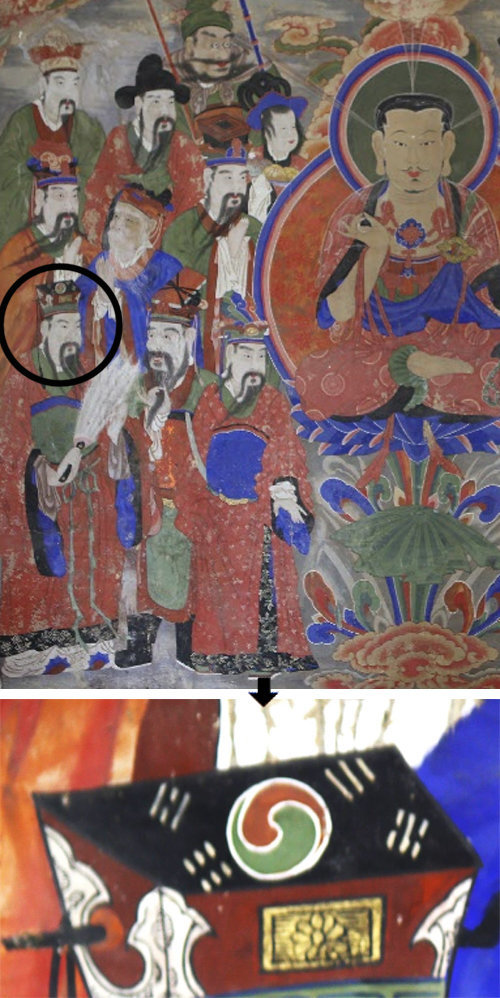Taegeuk mark found in Buddhist painting in Seonwonsa Temple
Taegeuk mark found in Buddhist painting in Seonwonsa Temple
Posted February. 22, 2023 07:46,
Updated February. 22, 2023 07:46

On Tuesday, the Seonwonsa Temple of Jogye Order of Korean Buddhism, located in Namwon City of North Jeolla Province, announced that it found the Taegeuk mark, a symbol placed at the center of the Korean national flag, from the period of anti-Japanese movement in the painting enshrined inside the temple. The painting depicts Kṣitigarbha and ten underworld kings, and the Taegeuk symbol was found in the official hat worn by Byeonseong, the sixth king of hell.
The symbol is about 8.5 centimeters in width and 3 centimeters in length, with the yang part painted in red and the yin in green, which is surrounded by trigrams. The Seonwonsa Temple said this is the Taegeuk symbol, which was used during the independence movement period against Japan before the official format of the Taegeuk mark settled in.
According to the records, it was produced in November 1917, and Buddhist Monk Jineung (1873-1941), a scholar and the then chief monk of Hwaeomsa Temple, monitored the entire production process. Monk Jineung was a pioneer of Korean Buddhism who established the Linji School against the attempt of pro-Japanese monks to subjugate Korean Buddhism to the Japanese Jodong School.
The painting of Byeonseong from the late Joseon era typically depicts sinners jailed inside woods of swords or wardens poking their spears toward jailers, symbolizing the hell of sword mountains or sword woods. “This is the first time that the Taegeuk mark has been found in a Buddhist painting,” said Song Myeong-ho, a researcher on the Korean national flag and an expert adviser at the Cultural Heritage Administration. “It seems to reflect their yearning that Imperial Japan must fall by swords as it subjugated Joseon with swords,” he added. “Back then in 1917, all artistic activities including the portrait of Buddha were censored by Japan,” Mr. Song explained. “It appears that the Taegeuk mark was covertly added after censor. It reflects the yearning of the Korean Buddhist circles for the country’s independence.”
Chin-Ku Lee sys1201@donga.com







